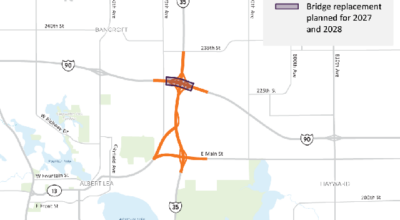Field reports: What Minnesota deer hunters can expect this season
Published 8:00 am Tuesday, October 27, 2020
|
Getting your Trinity Audio player ready...
|
Nearly half a million firearms deer hunters are preparing for the firearms deer season that opens Nov. 7, and offers opportunity to spend time outdoors with friends and family, find adventure outdoors and put venison in the freezer, according to a press release.
Hunters help keep deer populations in line with population goals across the state. Minnesota Department of Natural Resources’ wildlife managers report favorable weather so far this year and good opportunities to harvest deer in most areas.
Hunters need to know the boundaries of the deer permit areas and any chronic wasting disease regulations that apply where they hunt. Detailed information about each permit area and CWD area can be found on the DNR’s interactive deer map. Additional information about CWD areas, carcass movement restrictions and voluntary sampling can be found at mndnr.gov/cwd.
Northwest deer report
Deer hunters in northwestern Minnesota will have similar regulations as the 2019 seasons and deer populations are strong in most areas. In many permit areas, hunters are allowed to harvest more than one deer. Hunters in this region should check their deer permit area boundaries, as several have shifted since last year.
Water levels and whether ground is wet or dry can affect how hunters access hunting locations. Weather patterns in the region were very different from north to south this year. In the far northwest, there was heavy summer rain and strong winds. In contrast, areas in the southern part of the region have not received as much rain and are drier.
Northeast deer report
Permit areas in the northern portions of the northeast region, have had long, severe winters for the last eight years. In areas that had significant snow depth last winter — which has a more profound impact on deer survival than temperatures — more deer died and fewer fawns were born in the spring. This has required more lottery management zones this season than in past years.
In the southern portion of the region, where winter was somewhat milder, hunters will be allowed to harvest more deer in an effort to stabilize and in some cases further reduce local deer populations to goal levels. Where deer had access to good habitat, field observations show normal fawn production.
Hunters have good potential for success by focusing on prime food sources for deer such as mowed hayfields, forest areas that are growing back after being cut, and agriculture crops.
Central deer report
Strong early archery harvest and positive reports from hunters and DNR field staff point to what could be another outstanding year of deer hunting across central and southeastern Minnesota. Robust deer populations across the region have resulted in many permit areas with regulations allowing hunters to harvest more than one deer.
Dry conditions during the late summer and early fall mean crops are being harvested without delay ahead of the firearms opener. Average-to-high acorn production will keep deer in the oak woods this fall and provide hunters with another strategy for scouting and selecting hunting locations. Excellent summer habitat conditions provided plentiful forage and cover.
Southern deer report
Weather conditions for deer and other farmland wildlife were favorable in 2020. Winter conditions were milder, with above-average temperatures and shallower snowpack compared with 2019, with no spring snow storms.
Habitat conditions reflected the favorable weather. River floodplains, which offer some of the best deer habitat and deer hunting in the southern region, finally had a year to recover from persistent flooding over the last few years. As such, these floodplain habitats are once again offering excellent cover for deer, which bodes well for deer hunters.
Upland grassland areas and wetland basins are in good shape as well, but hunters will encounter lower water levels or completely dry wetland basins especially in the extreme southwest.
As always, the largest wildcard in this landscape in determining overall deer harvest is the amount of standing crop remaining in the field during firearms deer season. The crop harvest is in full swing right now and ahead of the long-term average — that’s another positive sign for hunters looking forward to deer season.
A map of DNR’s administrative regions is available on the DNR website.





